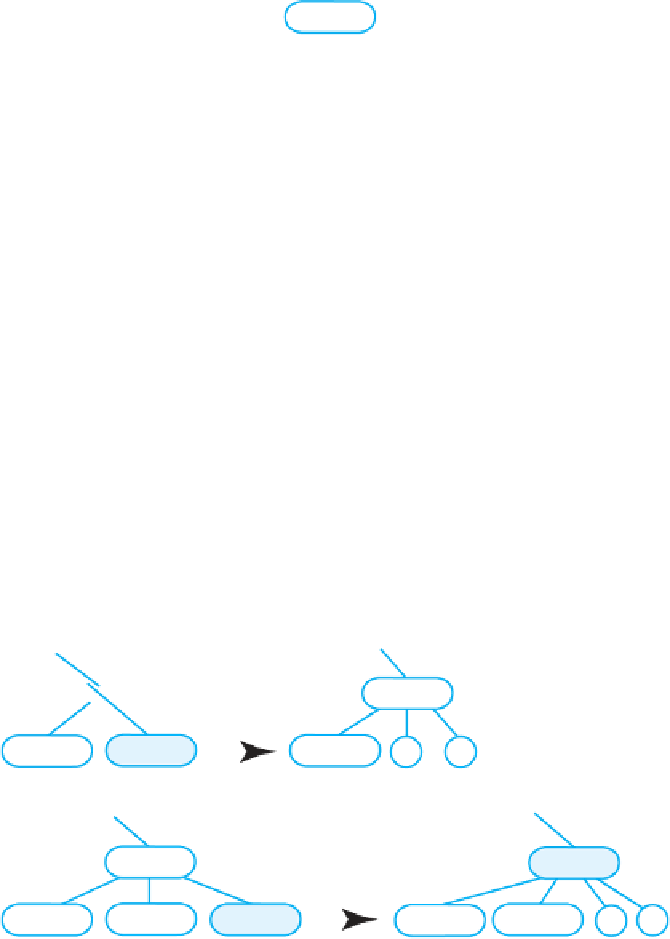Java Reference
In-Depth Information
FIGURE 27-17
The 2-3 tree after adding 35
60
20 50
80
10
35
40
55
70
90
Compare the final 2-3 tree in Figure 27-17 with the AVL tree in Figure 27-10a. We used the
same sequence of additions to form both trees. The 2-3 tree is completely balanced and shorter than
the balanced AVL tree. Later, we will compare these trees with the 2-4 tree in the next section and
draw some conclusions.
Splitting a leaf.
During the addition of a new entry to a 2-3 tree, the first node that splits is a leaf
that already contains two entries. Figure 27-18a shows a leaf that would need to accommodate
three entries. These entries are shown in ascending order as
s
,
m
, and
l
:
s
is the smallest entry in the
node,
m
is the middle entry, and
l
is the largest. The node splits into two nodes that contain
s
and
l
,
respectively, and the middle entry
m
moves up a level. If the parent of the leaf has room for
m
, no
further action is necessary. This is the case in Figure 27-18a. But in Figure 27-18b, the parent
already contains two entries, so we must split it as well. We consider that case next.
Although Figure 27-18 shows the leaf as a right child of its parent, other analogous configura-
tions are possible.
FIGURE 27-18
Splitting a leaf to accommodate a new entry when the leaf's
parent contains (a) one entry; (b) two entries
(a)
p m
p
Parent
Split
p m
s m l
s
l
(b)
p q
p q m
Parent must split
Parent
Split
p m
s m l
s m l
s
l
27.21
Splitting an internal node.
You just saw that splitting a leaf can cause the leaf's parent to have too
many entries. This parent also has too many children, as illustrated in Figure 27-18b. Figure 27-19
shows such an internal node in general. This node must accommodate three entries
s
,
m
, and
l
,
given in ascending order, and four children that are the roots of the subtrees
T
1
through
T
4
. Thus,

















